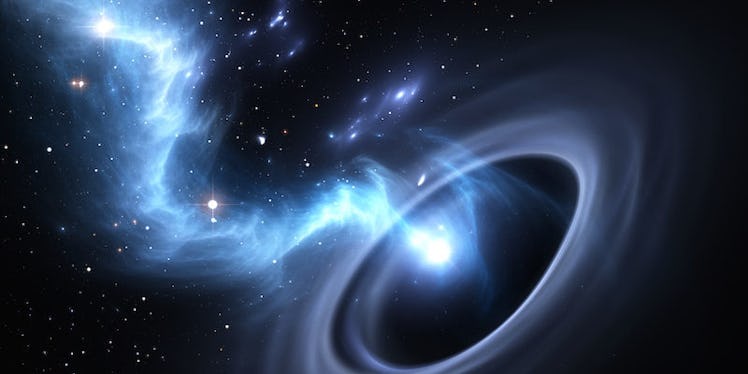
NASA Just Uncovered What Causes Black Holes To Emit Huge Pulses Of Light
A black hole has been captured emitting X-ray beams, which just might shed light on how black holes flare.
According to Huffington Post, NASA's Nuclear Spectroscopic Telescope Array (NuSTAR) discovered a gigantic black hole called Markarian 335 generating a flare 324 million light-years away near the constellation Pegasus in September 2014.
Black holes have long been known to generate beams of energy, but this observation allowed scientists to figure out how that generation happens.
The X-rays were caused by sources of high-energy particles around the black hole known as coronas.
Dan Wilkins, lead author of a paper set to be published in the Monthly Notices of the Royal Astronomical Society, said,
This is the first time we have been able to link the launching of the corona to a flare. This will help us understand how supermassive black holes power some of the brightest objects in the universe.
How coronas are formed in addition to their appearances, however, remain unclear.
The NuSTAR observation suggests coronas are like lightbulbs; they're compact light sources that float along the rotating axes of black holes, Daily Mail reports.
What appeared to be a pulse of light was actually the corona of Markarian 335 ejecting and then collapsing.
Wilkins said,
The corona gathered inward at first and then launched upwards like a jet.
NASA researchers may now look to determine what causes coronas to be ejected as light.
Citations: NASA's NuSTAR Spots Giant Eruption Of X-ray Light From Supermassive Black Hole (Huffington Post), Black Hole Has Major Flare (Jet Propulsion Laboratory), Nasa captures a huge pulse of energy coming out of a black hole: Discovery sheds light on how mysterious flares form (Daily Mail)